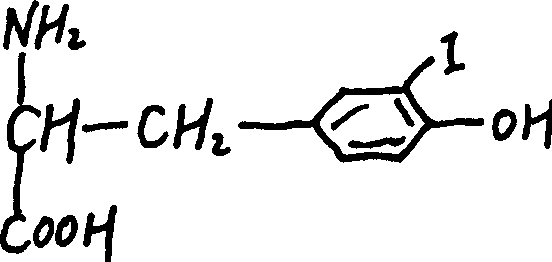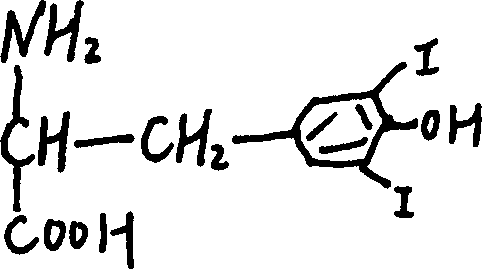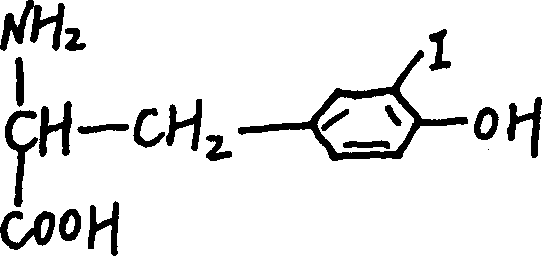Organic bio-iodine and its use
A technology of organic biology and edible salt, applied in the fields of application, food science, drug combination, etc., can solve the problems of high value, poor safety, and difficult absorption.
- Summary
- Abstract
- Description
- Claims
- Application Information
AI Technical Summary
Problems solved by technology
Method used
Image
Examples
Embodiment Construction
[0010] First, seaweed iodine is extracted from kelp and seaweed. Seaweed iodine contains organic active iodine (i.e. tyrosine iodine) and monovalent chemical iodine (i.e. potassium iodide). After seaweed iodine is purified and decolorized, tyrosine iodine accounts for 10-29%, and the remaining 71-90% is potassium iodide. Then the concentrated seaweed iodine is added to the spirulina culture pool. Due to the photosynthetic autotrophy of spirulina, through photosynthesis and biological reactions, the tyrosine iodine in the seaweed iodine is absorbed by the spirulina cells, and the potassium iodide in the seaweed iodine is absorbed by the spirulina cells. After separation and removal, after purification and decolorization, it becomes white or light yellow powder, and 98% of 1-2 iodotyrosine is obtained, of which 1-iodotyrosine content is 96%. The chemical structural formula is:
[0011]
[0012] The content of 2-iodotyrosine is 2%, and the structural formula is:
[0013]
...
PUM
 Login to View More
Login to View More Abstract
Description
Claims
Application Information
 Login to View More
Login to View More - R&D
- Intellectual Property
- Life Sciences
- Materials
- Tech Scout
- Unparalleled Data Quality
- Higher Quality Content
- 60% Fewer Hallucinations
Browse by: Latest US Patents, China's latest patents, Technical Efficacy Thesaurus, Application Domain, Technology Topic, Popular Technical Reports.
© 2025 PatSnap. All rights reserved.Legal|Privacy policy|Modern Slavery Act Transparency Statement|Sitemap|About US| Contact US: help@patsnap.com



